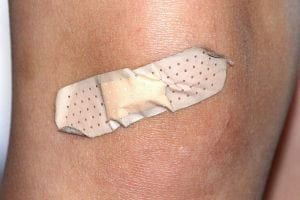March is recognized each year as Bleeding Disorders Awareness Month, an event meant to help spread awareness about bleeding disorders among the general public and in the medical community. Bleeding disorders, also called coagulopathies, are illnesses in which the blood is not able to coagulate and form clots normally, often leading to prolonged bleeding after an injury. Read on to learn how you can help spread awareness about bleeding disorders. The two most widespread types of bleeding disorder include hemophilia and von Willebrand disease (vWD).
About Hemophilia
Hemophilia is a genetic disorder which affects the ability of the blood to form clots, a process that is vital for stopping bleeding after a wound is sustained. The disorder is caused by a mutation found on the X chromosome. Symptoms include bleeding for a long time after an injury, risk of bleeding in the brain and joints, and easy bruising. Bleeding in the joints can cause permanent damage and brain bleeding can lead to headaches, decreased consciousness, and seizures. To learn more about hemophilia, click here.
About Von Willebrand Disease
Von Willebrand disease (vWD) is a blood clotting disorder, and is the most common type that affects people. Although the disorder is typically inherited, it can also be acquired as a complication of other medical problems. It is caused by a deficiency in von Willebrand factor. Interestingly, blood type has a significant influence on the severity and presentation of symptoms, which include frequent nosebleeds, easy bruising, and bleeding from the gums. In the most severe type 3, internal bleeding, such as in the joints, can occur. To learn more about von Willebrand disease, click here.
About Glanzmann’s Thrombasthenia
Another less common bleeding disorder is Glanzmann’s thrombasthenia. It’s a rare condition in which blood platelets don’t function because of a deficiency in glycoprotein IIb/IIIa levels. It can be inherited or acquired as an autoimmune disease. Glanzmann’s thrombasthenia feature mucosal bleeding, as well as bleeding from the nose and gums, gastrointestinal bleeding, heavy menstrual bleeding, and prolonged bleeding after birth and surgery. The severity of bleeding can vary widely. Click here to learn more about it.
Get Involved
Tap into the power of your social media feeds in order to get involved in Bleeding Disorders Awareness Month. Follow the Hemophilia Federation of America (HFA), which is posting a bleeding disorder fact every day this month. Then, don’t forget to share them with your followers.
The HFA has also uploaded a Facebook profile picture and cover image that you can use. Alternatively, you can use the support ribbon for your Facebook or Twitter profile. They also have educational info cards about hemophilia and von Willebrand disease. Click here to check out these resources.
In recognition of Bleeding Disorders Awareness Month, check out our Rare Classroom series from last week:








